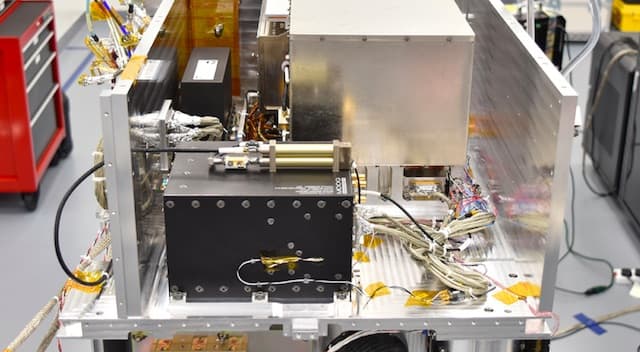NASA's atomic clock (DSAC) is ready for space; to help with radio navigation
NASA scientists have integrated the deep space atomic clock (DSAC) with the Orbital Test Bed (OTB) satellite to be launched into the orbit towards end of the year. This atomic clock allows keeping the drift limited to under 1 nanosecond in 10 days. In case you're wondering why does NASA need to send atomic clock to space; the reason is very interesting. Atomic clock helps keep precise time - and this time keeping is crucial for deep space missions. The atomic clocks will help NASA scientists precisely navigate the spaceships to their right destination.
NASA's spacecrafts are tracked using 'two-way' methods. First NASA's ground antenna will transmit signal towards the spaceship and then wait for the signal to return from the spacecraft. A sophisticated navigation system figures out the time between these two events and then figures out the location of the spacecraft. Scientists then make adjustments to the flight path if required.

Image Credit: NASA / Surrey Satellite Technology
The atomic clock, however, will make way for 'one-way' method where the spacecraft does not need to send the received signal back. With atomic clock, the spacecraft's on-board navigation system will be able to make necessary flight-path corrections itself. NASA says that this system would reduce the burden on the Deep Space Network and single antenna will be able to track multiple spacecrafts.
NASA scientists and engineers have been working on atomic clocks for over 20 years and improving their accuracy and efficiency steadily. The DSAC is more stable and accurate than any other atomic clocks previously flown into space. The curious minds may head over to official <a href="https://www.nasa.gov/mission_pages/tdm/clock/clock_overview.html" target="_blank" rel="noopener noreferrer">www.nasa.gov</a> website for more information.
Source: #-Link-Snipped-#
NASA's spacecrafts are tracked using 'two-way' methods. First NASA's ground antenna will transmit signal towards the spaceship and then wait for the signal to return from the spacecraft. A sophisticated navigation system figures out the time between these two events and then figures out the location of the spacecraft. Scientists then make adjustments to the flight path if required.

Image Credit: NASA / Surrey Satellite Technology
The atomic clock, however, will make way for 'one-way' method where the spacecraft does not need to send the received signal back. With atomic clock, the spacecraft's on-board navigation system will be able to make necessary flight-path corrections itself. NASA says that this system would reduce the burden on the Deep Space Network and single antenna will be able to track multiple spacecrafts.
NASA scientists and engineers have been working on atomic clocks for over 20 years and improving their accuracy and efficiency steadily. The DSAC is more stable and accurate than any other atomic clocks previously flown into space. The curious minds may head over to official <a href="https://www.nasa.gov/mission_pages/tdm/clock/clock_overview.html" target="_blank" rel="noopener noreferrer">www.nasa.gov</a> website for more information.
Source: #-Link-Snipped-#
0
